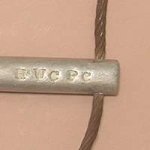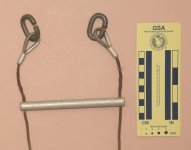afraidofthedank
Member
There’s a bloke in the states who has a ladder marked “HWCPC” that was given to him around 2009, and is trying to work out who gave it to him. Couldn’t link the original post I saw but he says:
“One of my ladders has “HWCPC” stamped on each rung. The ladder is 30 feet (9.1 m.) long with 6 inch (152 mm.) long, ½ inch (12.7 mm.) rungs spaced 10 inches (254 mm.) apart. I did not record where I got it or who gave it to me, but I believe that this was given to me around 2009, possibly at or soon after the UIS Congress that year. The ladder has Imperial dimensions, not metric, consistent with a UK or USA origin (among few others).”
He’s been in touch with some members of happy wanderers and apparently it wasn’t one of theirs.
Any ideas?
“One of my ladders has “HWCPC” stamped on each rung. The ladder is 30 feet (9.1 m.) long with 6 inch (152 mm.) long, ½ inch (12.7 mm.) rungs spaced 10 inches (254 mm.) apart. I did not record where I got it or who gave it to me, but I believe that this was given to me around 2009, possibly at or soon after the UIS Congress that year. The ladder has Imperial dimensions, not metric, consistent with a UK or USA origin (among few others).”
He’s been in touch with some members of happy wanderers and apparently it wasn’t one of theirs.
Any ideas?





